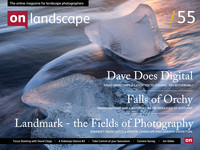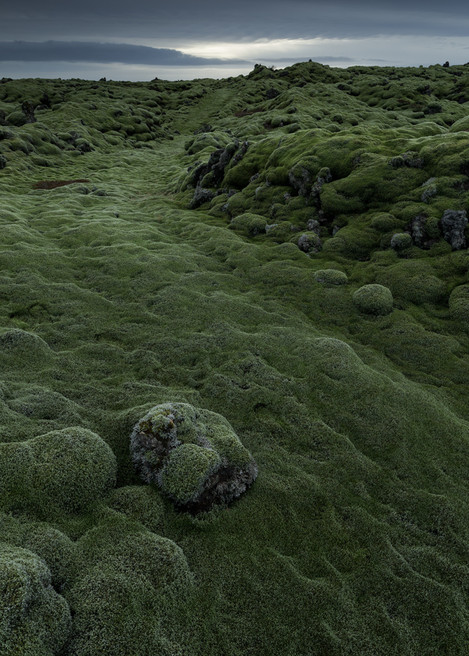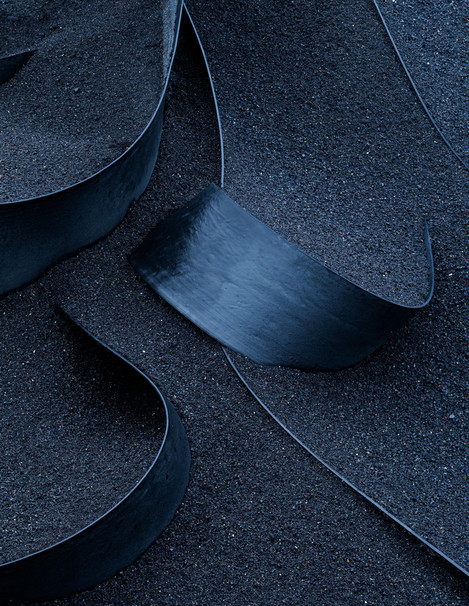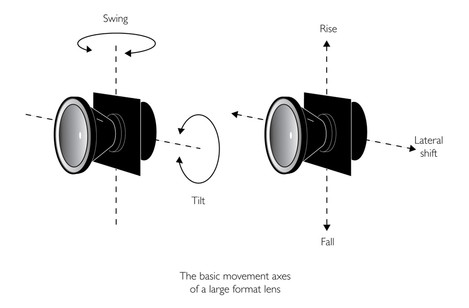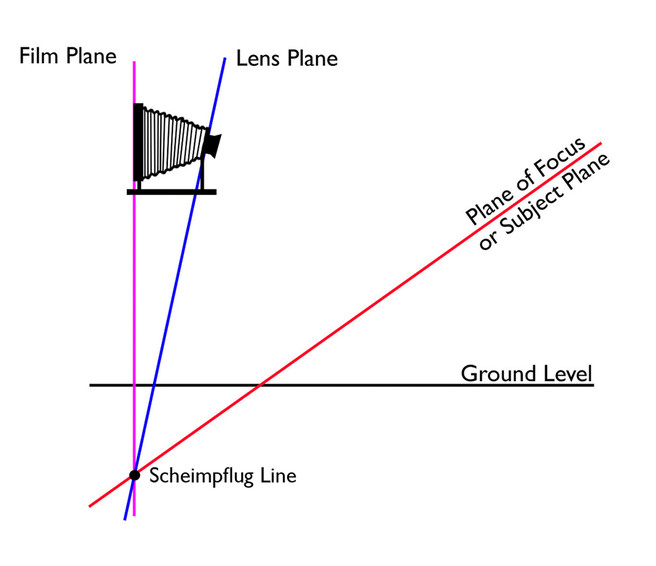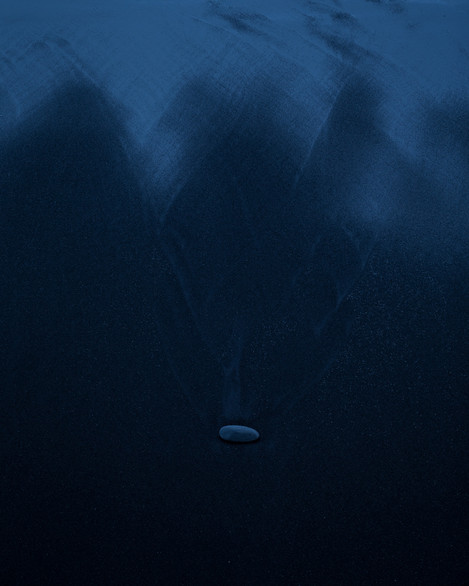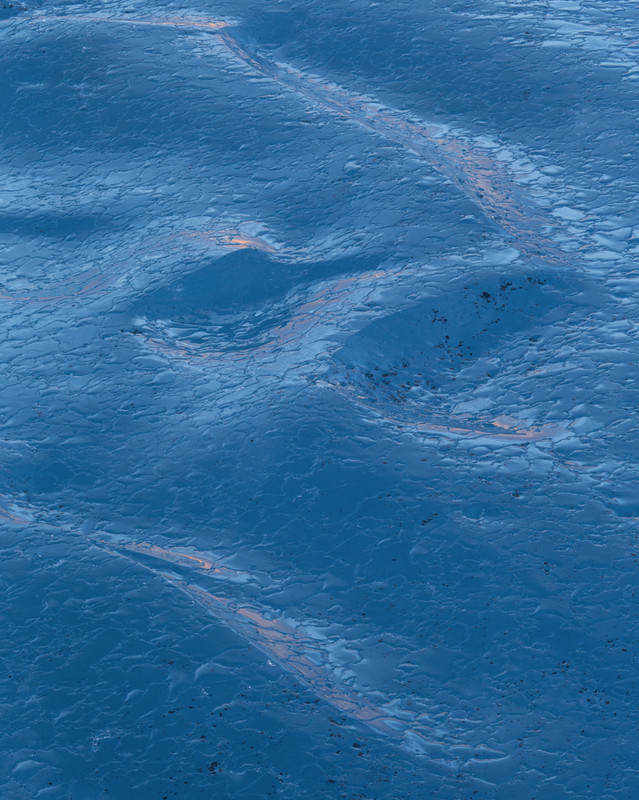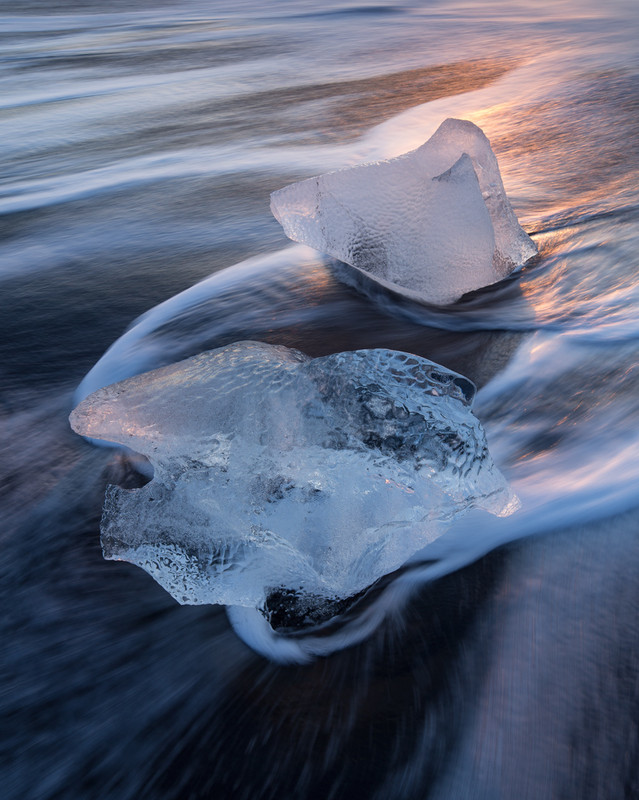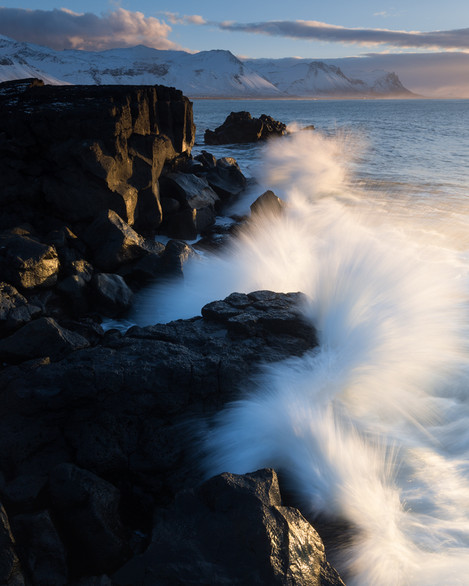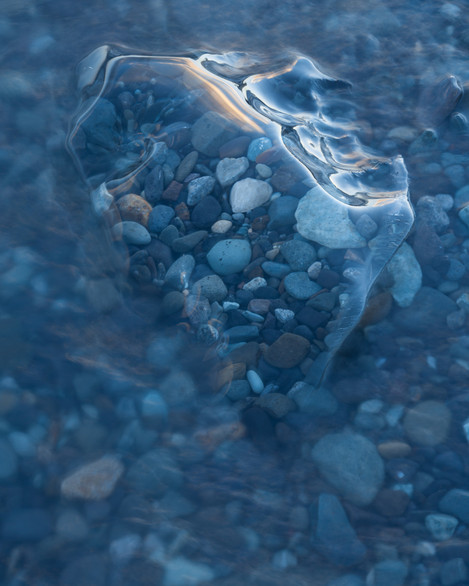From 5x4 to 1DX via Iceland

David Ward
T-shirt winning landscape photographer, one time carpenter, full-time workshop leader and occasional author who does all his own decorating.
As some of you are no doubt aware, Fuji’s decision to cease production of Velvia 50 sheet film has caused me considerable anxiety. Back in August I wrote an article that set out my dilemmas in looking for a future path for my photography. Would I start using Kodak’s Portra? Or would I re-mortgage my house (again!) and buy a Phase back and all the new kit that I would need? To be honest neither option filled me with joy. The former would entail a huge change in my post-production workflow and the latter just seemed out of reach. I didn’t appear to be getting anywhere near a solution, oscillating between two answers that I really didn’t like.
As luck would have it a new route presented itself when Canon UK kindly offered to loan me a 1DX and some tilt/shift lenses for an upcoming trip to Iceland. I’d been thinking for some time that I ought to get to grips with T/S lenses on a DSLR. I have had some experience with them when helping clients to use them on tours and workshops but I felt that it would be good to have an extended session with them and find out exactly what was and wasn’t possible. Many of my images rely on control of perspective and the angle of the plane of focus so T/S lenses would at least let me retain this vital ingredient in my photography. But I was aware that using a DSLR would be a very different way of working and I wanted to assess how the workflow compared with a view camera. I also wanted to see if working on a DSLR changed the kind of images I made. This last thought wasn’t a particularly comfortable one.
There were other reasons to feel disquieted about using the 1DX. I like working with a 5x4; I have a detailed technical understanding of my Linhof so the camera is no longer a barrier between me and the images I conceive. Many, many years of practice have been necessary for me to reach my current attuned state. But I have nowhere near as much in-depth knowledge of modern DSLRs. Of course, I understand how they work and how to get the best from them but there’s no substitute for actually handling a camera day in day out for an extended period. No matter how capable a camera the 1DX is I knew that I would still not feel completely at ease with it for at least the first few days. There’s an irony here; I am constantly telling clients on tours and workshops that they should get outside their comfort zone, that doing so would improve their photography. And now the tables were turned and it was my turn to be in an uncomfortable place! Time to man up and take a dose of my own medicine. I was determined to leave my beloved Linhof at home and only take the digital gear to Iceland.
The first advantage of going digital presented itself at the airport. I normally pack my 5x4 camera in a Pelicase and it travels in the hold.
After a night in Reykjavik it was time to get on the road and get to some locations to make images. To go along with the 1DX, Canon had very kindly loaned me two T/S lenses (the 24mm and the 90mm), a 24-70mm zoom, a 70-200mm zoom and a 1.4x converter. Learning about the T/S lenses was a priority for me so I started off by using the 90mm T/S lens on the black sand beach at Vik.
I’m afraid that I couldn’t completely leave the Linhof behind and worked with a 5x4 crop in mind when making this photo. I was drawn to the way the remains of this anti-erosion fence formed beautiful organic curves, with the whole image having a very restricted palette. The principles of focus using a T/S lens are exactly the same as those used with a view camera. For this image I wanted to lay the plane of focus into the image so that the sand in the foreground and the bands at the back were all in focus without having to stop down to a very small aperture. I therefore needed to tilt the lens down to lay the plane of focus onto the scene. For this image I used the 90mm T/S lens and worked from about 40cm above the sand. From this distance and with this focal length it would have been impossible to get this composition sharp all the way through without movements.
Time to define tilt and shift and talk a little about how using movements changes things. The diagram below shows the axes of movement of a view camera lens but the nomenclature and effect are the same for T/S lenses. If the movement is about a horizontal axis it is called tilt. If it is about a vertical axis it is known as swing. These lenses also allow you to offset the image by shifting the lens laterally or vertically (the latter is known as rise and fall). Changing the angle of the lens relative to the film/sensor plane of the camera automatically changes the angle of the plane of focus. In the case of tilt tipping the lens forward progressively lays the plane of focus onto the scene. Consequently, tilt can be used to get both near and far objects in a landscape crisply in focus without resorting to small apertures. This effect is governed by what is known as the Scheimpflug Principle.
Captain Theodore Scheimpflug (oh how I wish he was called Smith) was an Austrian Army officer concerned with aerial reconnaissance and mapping. It had been noted by others that tilting the lens plane (L.P.) relative to the film/sensor plane (F.P.) tilts the plane of sharp focus; a useful thing when you’re trying to get sharp images of the enemy trenches at an angle from a balloon. However, Scheimpflug was the first to prove, in his 1904 patent, that in order to achieve perfect focus all three planes must intersect. This intersection is called the Scheimpflug line.
The usual focusing method using tilt is iterative, there are alternative methods based on measurements and tables but they’re both slower and less accurate. The following is a simplified description of focusing using Scheimpflug with a view camera.
First, one selects two targets on the ground glass (one near and one far along the same plane). A movement is applied (usually tilt in a classic landscape) and the far target focused on. The second target is then scrutinised, using a magnifying loupe on the ground glass, and a small amount of extra movement applied. If the image gets sharper at the second target then you are moving in the right direction, if it gets less sharp then too much tilt has already been applied. Return to the first target, re-focus and repeat until both are in sharp focus.
Care must be taken to apply tilt in small amounts. Don’t be tempted to go straight to sharp focus on the second target. This will mean that both targets cannot be in focus at once. It must also be remembered that the focusing plane is a flat surface. If your subject is very three-dimensional then movements might not be the answer, it may simply be better to stop down.
The same basic focusing principles apply to T/S lenses on an SLR. So, on this image, working with manual focus I selected live view and zoomed in to ten times magnification on my first target (the pebble in this case), I applied some tilt then focused. Before the advent of live view it was very difficult to see whether one had achieved critical focus on your targets and, to my mind, movements were almost impossible to accurately apply. This way of working is, I suppose, analogous to using a ground glass screen. Old habits die hard! However, the process did seem slower to me than using a loupe on ground glass. If live view could hold two targets in memory at once then toggling between the two positions at the press of a button would make things much quicker. I have passed on this insight to Canon. Unfortunately, I suspect that this solution isn’t a trivial matter in terms of memory and coding so it’s a feature that might only ever appear on the top end cameras.
After a little practice I got quite proficient at focusing but it also became apparent that the range of movements available was neither as great nor as capable of fine tuning as on a view camera. I wasn’t surprised about this, and this restriction is in no way a criticism of Canon. T/S lenses give access to control over the angle of the plane of focus but they can never be as flexible as a view camera working, as they do, within the physical constraints of the format and specifically with the architecture associated with reflex viewing. The SLR body design, dictated by the mirror and pentaprism layout, means that the T/S mechanism has to be a bolt-on in the front of the lens mount throwing the lens forward and restricting the number of degrees of movement possible without vignetting
The geared movements on the T/S lenses give fine control over tilt or swing but achieving focus on a compound plane (one requiring both tilt and swing) is compromised. With view cameras one typically has separate control over tilt and swing allowing one to focus on most planes canted at an angle to the camera restricted only by the size of the lenses image circle. With the T/S lenses you swap between tilt and shift by releasing a small locking switch and rotating the barrel. Pre-set intermediate positions allow focus of compound planes. Unfortunately these are dictated by the click stops on barrel rotation positions so only a reduced set of compound planes are available.
On the view camera I more frequently use movements on the rear standard than on the front. Movements applied on the rear alter the perspective of a scene. They can be used to make the foreground appear to loom within the frame, emphasising it in relation to the background. This technique is used to great advantage in Ansel Adams’ famous image of Mount Williamson. But DSLRs have a rigid body so movements applied on T/S lenses are effectively only on the “front standard”. However, with a combination of tilt and shift the effect is still possible, though a little awkward to achieve.
"Looming"
We've added a small article in this issue to show the way 'looming' works and how you can achieve the effect with a DSLR tilt shift lens. Click here for viewIt’s also worth noting the following: to achieve a given desired plane of focus
• The smaller the format, the less movement is needed.
• The shorter the focal length. the less movement is needed.
• And the further one is away from the desired plane, the less movement is needed.
The first two points offer both an advantage and a disadvantage. They mean that typically on a DSLR only very small amounts of movement are needed in order to focus a wider scene. This means that the limitations in degree of tilt are usually not a problem. It also calls for a high degree of precision in order to achieve the optimum plane. So, for instance, with the 24mm T/S lens one might only need one degree of tilt when working from head height. Quite often an equally good result might be achieved by stopping the lens down. This is certainly true of the 17mm T/S lens. Personally I think this lens would only be useful for the shift control, allowing you to include the top of a tall building, for instance, without distorting the perspective. The 90mm T/S lens is closer to the equivalent focal lengths that I prefer on the 5x4 so I spent a good deal of my time using this lens. Optically it’s very good though it does have a tendency to flare in high contrast situations, usually correctable with a judicious use of shading. The lens is an older design than the 24mm and 17mm so perhaps this shortcoming is not that surprising.
I used the 24mm T/S for this image and this was perhaps the first point that I really made an image on the 1DX that I would have struggled to make on the 5x4. Standing in pounding surf and trying to catch the optimum moment as the waves retreated around these bergs I exposed 23 frames, something that would have been financially ruinous on 5x4. The scene was very dynamic, with the bergs moving around when bigger than average waves came in and the tripod constantly being undermined as the water took away the sand around its legs.
My general method of working was little changed from the view camera, in that I would visualise a composition that I was interested in and then shoot a number of frames from the same viewpoint rather than sketch my way to a composition with each frame being different from the last. Looking through all the images when I got back I found that I made 116 different compositions in 10 days; hardly "spray and pray" but definitely more profligate that I would have been on 5x4. To give you some idea I might typically make between 40 and 50 compositions on the 5x4 in a ten day period. So using the Canon didn’t result in me making an order of magnitude more images but it was in some ways more productive. Having said that I note that only around 12 compositions really made the grade as far as I was concerned and of these perhaps five are likely to remain favourites.
Perhaps the biggest difference in the way I worked with the 1DX was that I was more inclined to shoot dynamic subjects, such as this image of waves crashing into the shore near Bu∂ir on Snaefellsnes. I even made a foray into wildlife photography. Andy Rouse need not be concerned…
As much as possible I kept to the native ISO of 100 on the Canon but even this modest increase allowed me to capture effects with moving water that were quite distinct from those that I would have got on Velvia. This image was shot on a modest f13 with a shutter speed of 1/20th sec and, I think, captures the power of the waves. For comparison the shutter speed on Velvia 5x4 would have been around 1/2sec giving a much less dynamic and more dreamy result. This look is not something that I’m fundamentally averse to, large format combined with slow film often forces long exposures on the photographer. And some photographers have made great use of this technique, I’m especially reminded of John Blakemore’s misty sea images from the late 1970’s. But really it is nothing new and is beginning to feel far too commonplace in an era when everyone and their dog seem to be using Big Stoppers.
The big question is, I guess, will I be swapping to a DSLR and T/S lenses. The short answer is not entirely. But I may well be tempted to shoot certain subjects, such as Bu∂ir, with this kind of setup. For other images, such as those I made on Vik beach, I still feel a sense of loss when I look at the final result. Technically they’re fine but I know that they’re not as good as they could have been on Velvia on my beloved Technikardan. The great advantage of shooting with both formats is that I may be able to eke out my finite supplies of Velvia. Of course it probably means that my excess luggage bills will just get bigger. Who said that digital was cheaper?!

